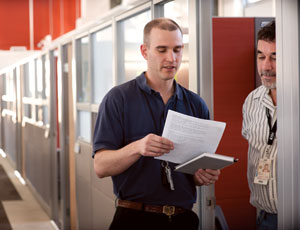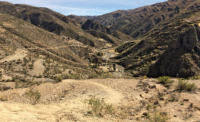One night in early March as well as the next day before dawn, the Dept. of Energy’s Jeffrey M. Baker wasn’t pleased when he noticed lights still burning on two floors of his pet project: the National Renewable Energy Laboratory’s new, ultra-green office building in Golden, Colo. “The cleaning staff probably left them on,” said Baker, who oversees the lab.

Shanti Pless, a senior lab engineer who monitors building energy use, confirmed the night-light condition, which was not part of the energy budget. “We’re testing daytime cleaning,” says Pless, who recently moved his office into the building, along with 800 other staff.
Pless and his team are also fine-tuning other energy systems to keep the living laboratory, still in its pilot phase, on its strict energy diet of 35,100 Btu per sq ft per year. “We are very happy with the way the facility is performing because, in general, we are meeting expectations of the energy model used for design,” says Pless.
Minor control problems with evaporative cooling and adjustments to daylighting don’t get Pless down. The building has reached net-zero energy use on occasion although the site’s several photovoltaic arrays are not yet completed.
By next year, when the building’s expansion is complete, Pless will monitor its systems against an energy budget of 25,500 Btu per sq ft per year, achieved through many small changes based on lessons learned from the original.
Pless doesn’t mind hearing Baker’s concerns about the project, saying, “He’s probably one of the only executives I’ve ever worked for who cares about how the building is actually performing.”









Post a comment to this article
Report Abusive Comment